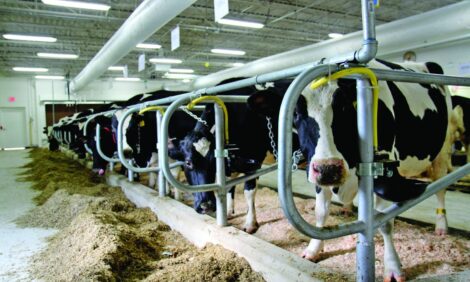



Electric Fork Lifts for Indoor and Outdoor Use
Electric forklifts represent roughly 55 percent to 60 percent of all lift truck sales in the United States and are used in almost every industry to transfer cargo, stock, and pallets, writes Gary Floyd from Georgia Tech Research Institute.Whether in retail, manufacturing, or warehousing, these simple-to-operate vehicles are quiet, clean, and efficient. But not only are they environmentally and ergonomically friendly, they also can save thousands of dollars annually per vehicle. Why?
Electric models are less expensive to maintain because they have fewer moving parts that are subject to wear-out or fail. Some manufacturers have cut forklift maintenance time in half and reduced their parts such as seals and hoses as well as manpower costs. Substantial savings have resulted from no longer having to rebuild components such as alternators, water pumps, engines, transmissions, and starters.
A poultry processor in North Carolina that uses forklifts to transport boxes of processed chicken from production areas to the plant’s coolers and freezers has found them less expensive to operate, and 80 percent of their forklifts used inside the plant are electric models.
Electric models have higher upfront costs than internal combustion (IC) engines, mainly because of the need for a charger and an extra battery pack. In multiple shift operations, operators should consider new charging technology (opportunity or fast charging). These technologies can reduce battery inventory and in some cases completely eliminate battery changing systems. But when factoring in the higher upfront costs for electric forklifts with lower maintenance and much lower fuel costs (70 percent to 80 percent lower), longer service time, and less downtime, the life-cycle costs are substantially lower. Thus, the initial capital cost can be recouped during the useful life of the electric forklift.
Manufacturers are also finding that electric forklifts can handle larger loads and work a full shift on a single battery charge, yet outdoor electric lift trucks are not as prevalent as the indoor models. Why? The most common reasons given are misperceptions and the result of a lack of information.
A few of the key misperceptions are that electric lift trucks are underpowered, that batteries cannot last a full shift, and that electric trucks are unsafe in wet weather. In addition, most U.S. users have no experience with electric outdoor trucks, although they are commonly used in Europe. The other reasons provided for not going electric include the higher up-front costs for the electric models (20 percent to 30 percent), and past experiences were unsatisfactory. Finally, users are not receiving information on the economic payback from dealers in addition to the benefits of using electric lift trucks.
To better understand some of the concerns associated with electric outdoor lift trucks, the Electric Power Research Institute (EPRI) conducted a study with seven lift truck dealers in Alabama and Georgia (Electric Outdoor Lift Trucks: New Technologies Meet Customer Needs - Product ID: 1020515 http://et.epri.com/publicdocuments.html). Dealers identified customers willing to try a 2007 model-year electric outdoor forklift for a period of two weeks to one month.
Customers with work environments that would provide challenges to an electric outdoor lift truck and would parallel the workload of an IC fork lift were selected to participate. Representative industry sectors included chemical, wood, agricultural product manufacturers; foundries; manufactured homes; cotton gins; building materials and hardware distributors; and brick, wire, paint, and coating manufacturers. In New York City, the sanitation department was selected.
Information was collected on the energy use, truck efficiency, and performance data from each forklift. The study also conducted customer interviews to record end-user experiences with the safety and reliability of the forklifts, and to note any performance issues that occurred.
The results of the study were mostly positive. No weather-related issues were reported that hampered performance, and the trucks operated in cold, rain, heat, and high humidity applications. The drivers liked the quietness, the lack of fumes, the ergonomic improvements such as armrests and joy stick controls, and the smoother ride due to less vibration, wider units, and pneumatic tires.
Drivers said the electric forklifts performed as well as or better than the IC units, with good turning radiuses and lift handling. The forklifts performed well on the various ramp configurations, traveled an average distance of 200-300 yards, and met user needs in almost all job settings.
Concerning fuel use, the customers reported a significant reduction in fuel consumption and an increase in operating efficiency, largely because electric motors do not idle when the truck is in park or neutral. The electric forklifts were in the non-operating mode 15 percent to 50 percent of the time.
Battery life was rarely an issue for customers operating on an eight-hour shift, even with use on ramps and longer runs. When it came to refueling, the drivers also liked the simplicity of plugging in the charger than handling combustible fuels.
Finally, the study concluded that in a few cases the electric forklift models assigned during the study were not appropriately matched to the specific applications, which resulted in negative feedback from the users. However, many of the participants said they would use electric forklifts if they were properly sized for the job and properly maintained.
One customer said, “I was skeptical to start, but it ran and operated very well on 24/7 shifts…The guys really liked it, particularly the low maintenance. They also liked the lack of noise.”
In conclusion, electric forklifts are prevalent for indoor applications across multiple industry sectors because they are quiet and clean running with no emission problems resulting in enhanced workplace health and safety that is consistent with the Occupational Safety and Health Administration standards. In addition, they are cost efficient when evaluated over the expected lifespan of a fork lift. The EPRI study also clearly showed the appropriate electric forklifts are well suited and can be used very effectively in outdoor tasks as well.
September 2010


